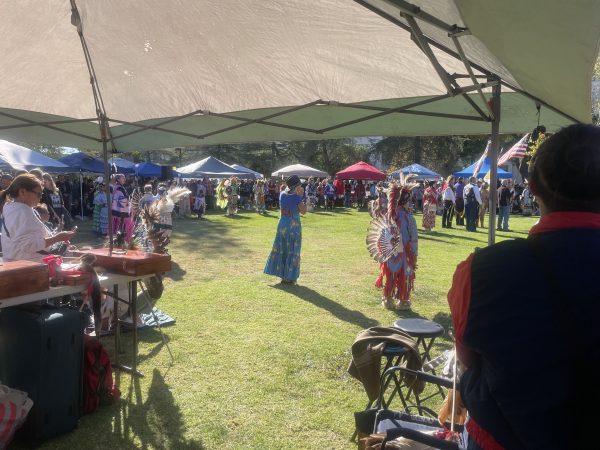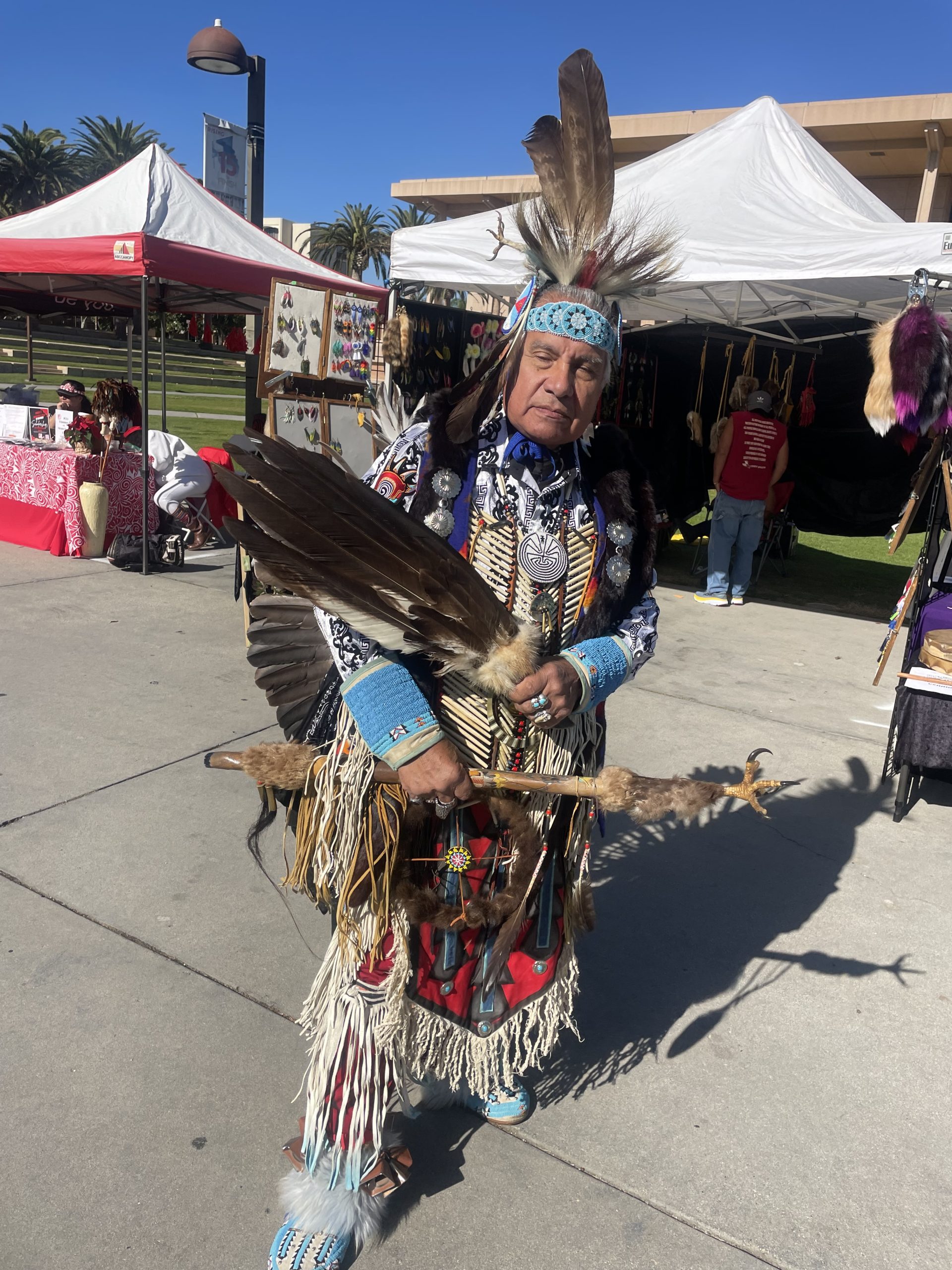Crowds gathered around the green field at the center of campus on Nov. 25 on the Sierra Quad to watch a ceremonial performance, the Gourd Dance. It honors veterans, the culture and acts as a prayer to the creator of the Kiowa tribe.
Starting off with a bang, arena director Victor Chavez and Randy Pico who acted as the master of ceremonies serenaded the crowd with a performance of song and dance.
The ceremony was scheduled to be all day, starting at 11 a.m. and going until 9 p.m.
When the performers go out and dance, every piece of clothing they wear symbolizes nature that harnesses spiritual power or represents important events.
CSUN’s 38th Annual Powwow took place to commemorate the American Indian community. A powwow is an American Indian ceremony that involves eating, dancing and singing to share experiences and connect with friends and family.
The event featured frybread, Navajo tacos and spam musubi.
As mentioned by the Oklahoma Historical Society, the first powwow was the Ponca Powwow in 1879. Speakers at the event explained how powwows at first were illegal, so they had to advertise these celebrations saying, “Come See Live Indians,” in order to get people to come out. They kept the event alive until they could bring it out of hiding.
Tommy Tomahawk, a Northern traditional dancer, told said he represents the men who are warriors, hunters and protectors of the tribe. He explained how the breastplate he wore gave protection from all different animals in nature. He also wore an eagle staff and bustle that contained about 70 eagle feathers.
Eagle bustles are made of string and the bird’s feathers, attached to a backboard. Bustles are usually worn by a Native American man when he is to dance at a powwow. Dancers typically wear two bustles, one on their waist and one on their back.
“This is like our church. The drum beats that you hear– boom, boom, boom – represents our heartbeat,” Tomahawk said. “We dance to the heartbeat, thanking Mother Earth for everything that she gives us.”
There are powwows that occur all year. Most Native American names include their real names and their clan name added to the end, but it varies. The traditions are different for everyone. Some choose their names while others are given their names in a ceremony due to their significant achievements.
“There really aren’t that many places for Indigenous people. When I first started coming to these events, you don’t really know everyone but when you dance and participate and interact with people, they start to become your family,” Northern traditional dancer Micheal Tiger said. “In a way they adopted me. It’s a community that accepts everyone.”
CSUN resides on Indigenous land, the unceded territory of Sesevenga. The event was also to honor the Sesvitam, the Natives who first originally owned this land, the present and all those before them.
Alexandria Ybarra, president of CSUN’s American Indian Students Association, said they wanted to spread awareness across the area about the Natives who used to call this place home.
“We want to bring awareness to Indigenous cultures and students, to uplift Indigenous students and bring our cultures and practices to institutional areas and to bring awareness to students on campus,” Ybarra said.







